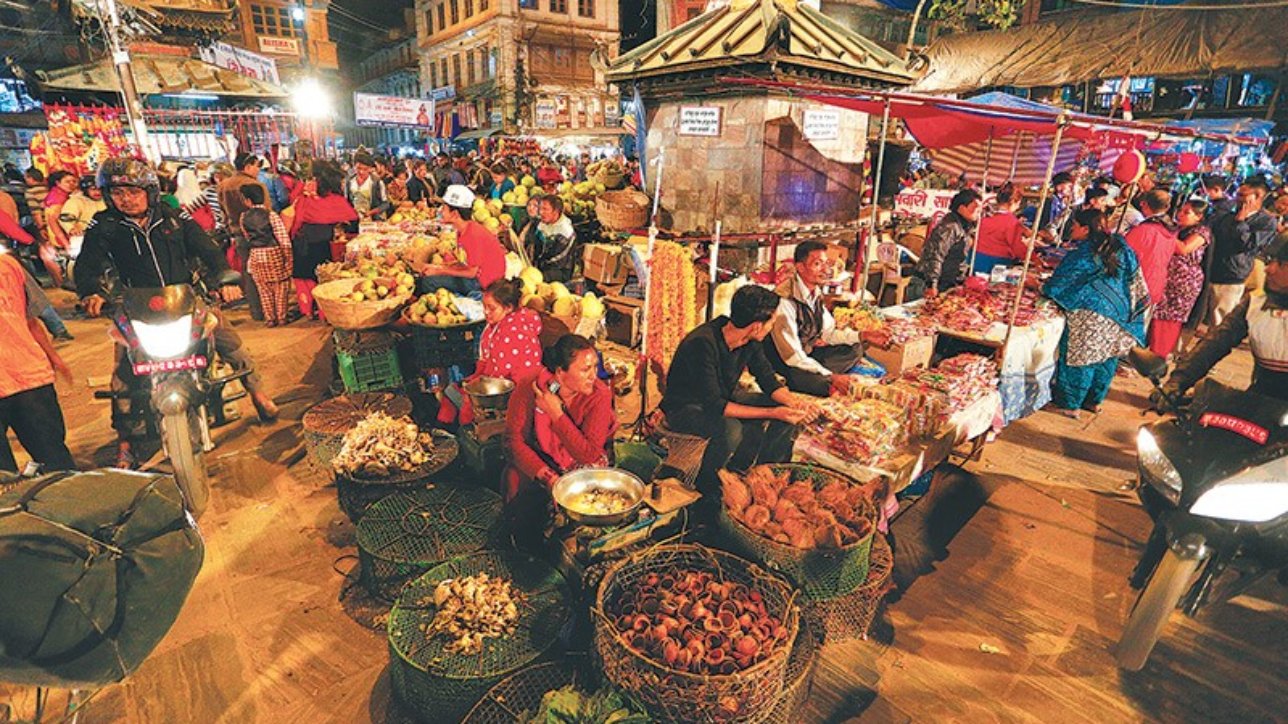Nepal will slowly inch back to normal by the end of the week, after a month full of festivities. In an agrarian society, a month’s break and the accompanying celebrations after hard physical labour is perfect. But we need to start thinking about whether we can afford to take a month long break with the globalised economy in mind. The fact that people are fine with activities slowing down for a month shows how the economy is insular, reliant on domestic consumption, and has little to do with export or the outside world.
Vicious cycle
On social media, I read about people complaining about the high prices of fruits and other vegetables. For example, peas were being sold for Rs300 per kilogram. Festivities create a vicious cycle of profiteering. The farmer will be under the impression that everything he buys for the festive season will be expensive, so he seeks to charge more for the vegetable he sells. The transport guys do the same, and so do the labourers engaged in transporting. Due to the rush and extra demand because of the festivities, many issues such as storage, parking and timing are compromised. This cannot happen without greasing the palm of the concerned officials, who are also looking for a yearly bonanza. The big wholesaler, the intermediary and then the retailer decide to increase their own mark-up to pay for the other goods and services they have to buy. Therefore, the combination of increasing their own prices to cover the increased cost at every level pushes the rates through the roof. Since there is only a small section of society that does not charge more to cover increased cost, apart from a bit of complaining, there is no visible public outcry or furore. It seems the economic theory of demand and supply is embraced by all.
What has changed?
Comparing celebrations of Dashain and Tihar from three decades ago to the festivities now, I keep wondering what has changed. Maybe in a few homes, men now tend to the kitchen and try not to make this period a nightmare for womenfolk at home. More people are traveling during the holidays, creating a big growth in the domestic tourism industry as well as a phenomenal growth in outbound tourism. The fact that we can get a visa on arrival in Indonesia and that there is good airline connectivity has made Bali a highly preferred holiday destination. Lessons for other countries who want Nepalis to visit: make visa processes easier and improve connectivity—a good portion of Nepalis are ready to travel!
However, some things have not changed much. The card games continue, with the rate for Marriage (a popular card game) at Rs1 per point increasing to Rs100. The budget for gambling has increased, as more free money is available in a rent seeking economy. Gifts have become more costly. The earlier ‘socialist’ and ‘communist’ maxim of ‘Red Book during the day and Red Label at night’ has been replaced by ‘Single Ideology during the day and Single Malt at night.’ Nepalis have also learnt to take note of the age of a whiskey to judge its quality. Leaders across all disciplines cite this as an example when explaining why older leaders are better than younger ones!
Of course, Deusi and Bhailo have become as rare as political unions. It seems as though everyone sees these practices as unnecessary petty income activities, as the government budget from a $25 billion economy has swelled and largesse is distributed with less accountability. Despite the blockade, rangolis inspired by Bollywood soaps are preferred over Nepali mandalas, and of course, Bollywood song and dance routines are preferred to Nepali numbers during Deusi/Bhailo.
Economics of an open border
Indian citizens come to Nepal during the festivities to take advantage of the business generated by over 5 million Nepalis living in the Kathmandu Valley. These Indian citizens predominantly sell fruits or prepare sweets. It is interesting to hear their perspective on Nepali consumption habits. One team of eight sweet-makers that I talked to came from India. They mentioned that they would take back about $10,000 after about a month’s work. They told me how they would never be able to spend as the Nepalis do. It would be interesting to keep a log next year on how many people cross the border in to Nepal during these festivals and how much money they take back. It will help prove that the open border has benefited both countries.
On local governments
After two decades, we finally had a festive season with elected local governments in place. We could wonder if the local governments implemented any creative ideas during the festivities. Of course, money was made by leasing out open spaces. But it would be interesting to learn what the local bodies did to contribute during these times. Of course, the political leaders had to travel to more places to give speeches. We witnessed the decentralisation through the scenes that we saw on television, with leaders talking about elections at hundreds of meetings that were held across the country. With ugly badges on their chests, garlands, and more people on stage than in the audience, there has surely been a localisation of these bad habits also. We can hope that next year, some locally elected leaders can be creative enough to showcase some cultural programmes that can perhaps attract international as well as domestic tourists. Every juncture gives us an opportunity to reflect on what was different this year compared to the previous years. And of course, the big one is the load shedding free Tihar for most parts of Nepal. Perhaps, good management lessons are available to learn from Kulman, the Man!
–

